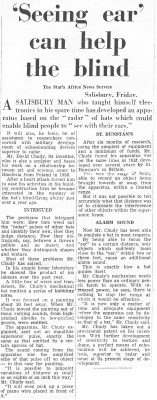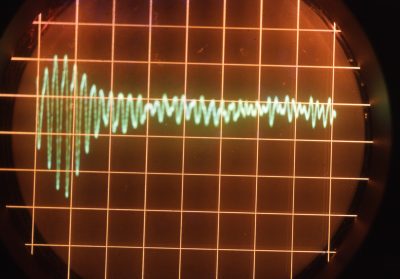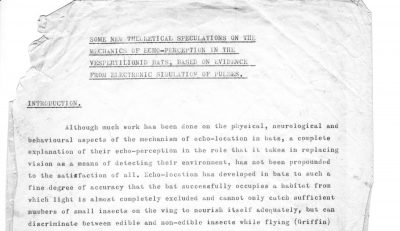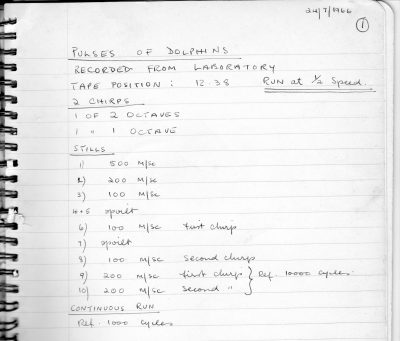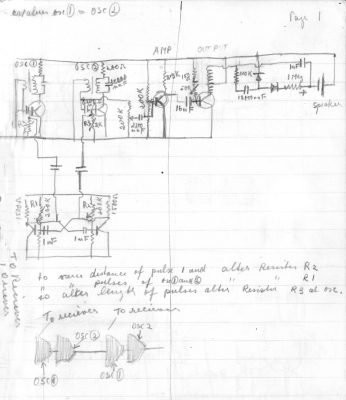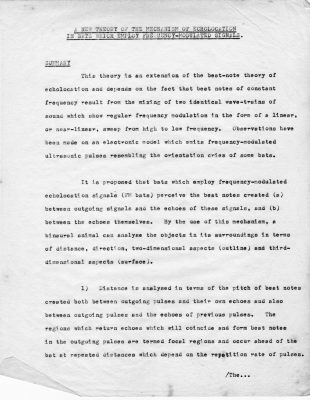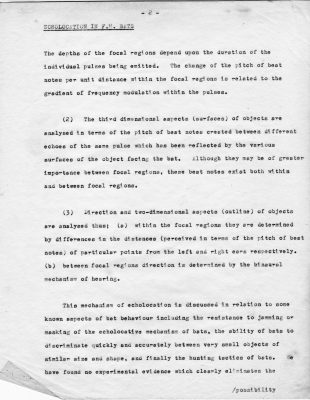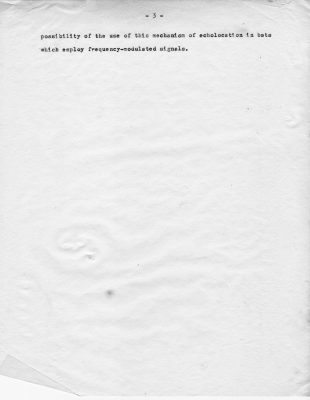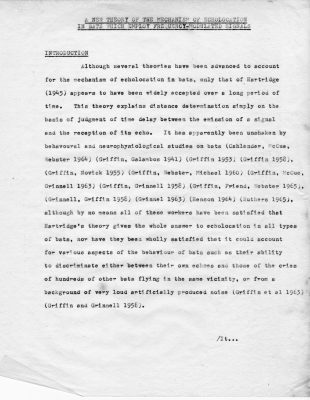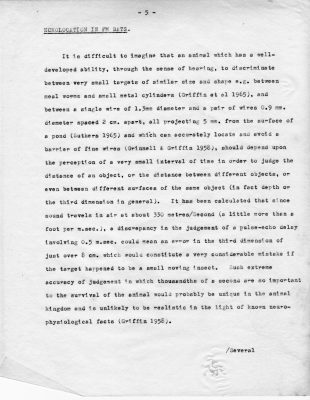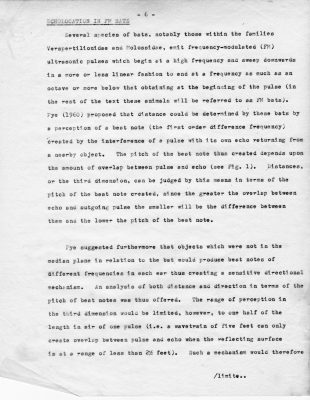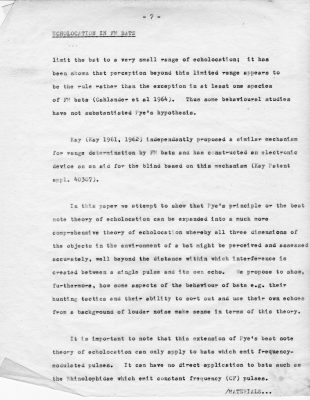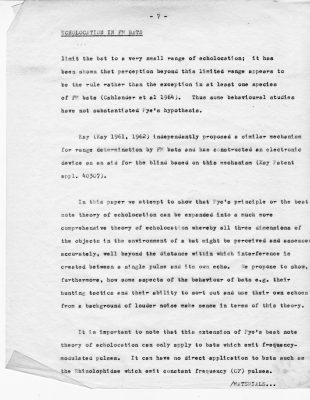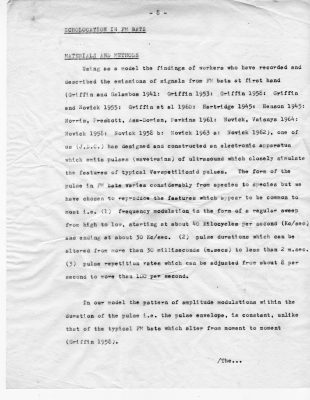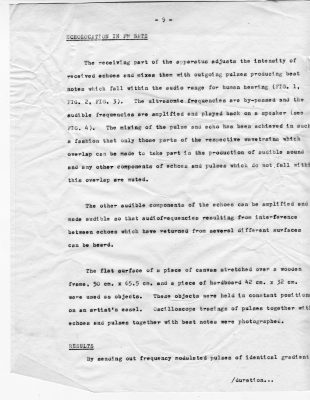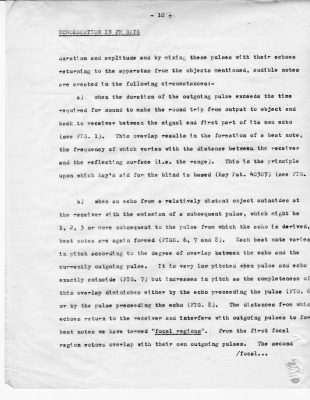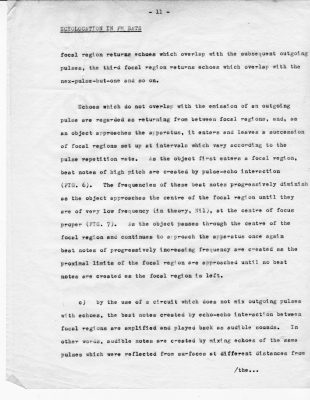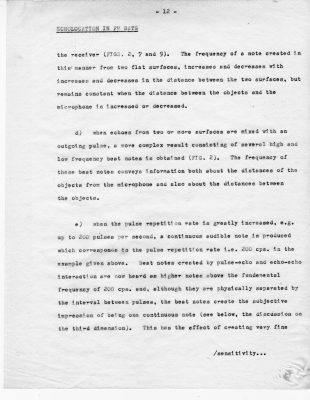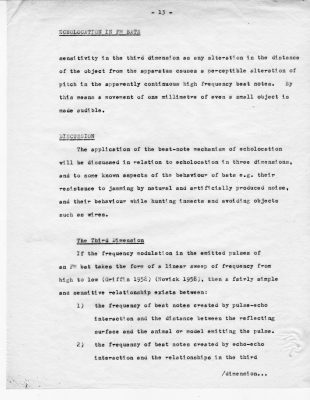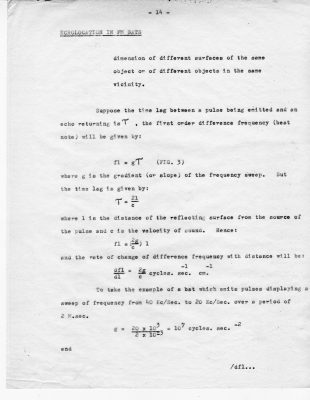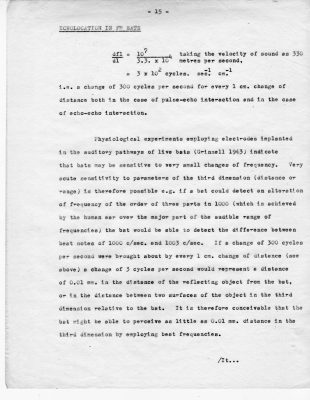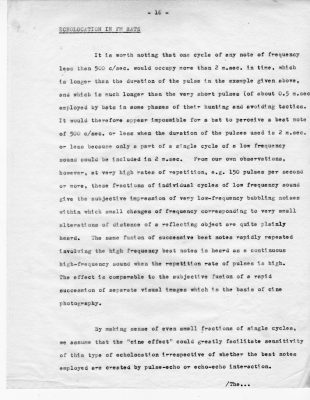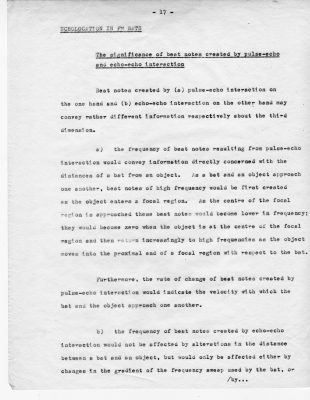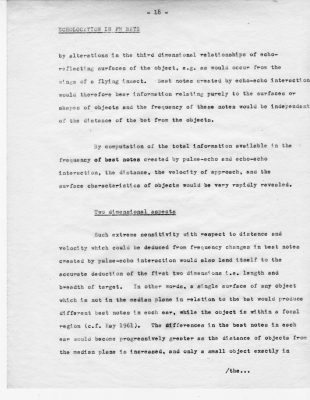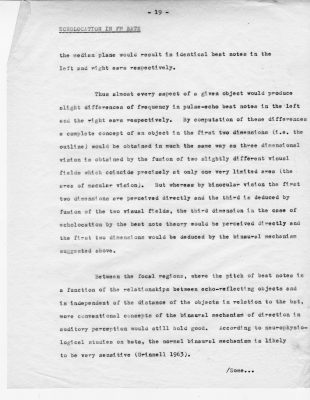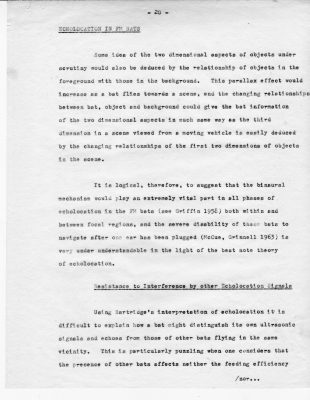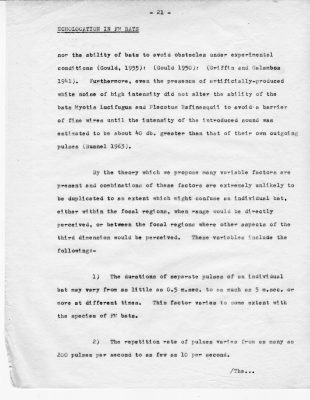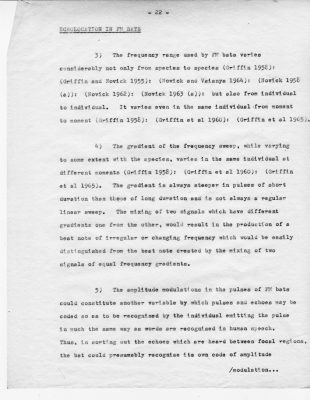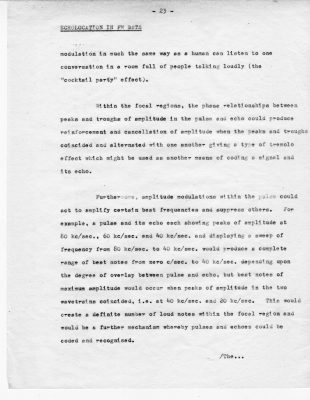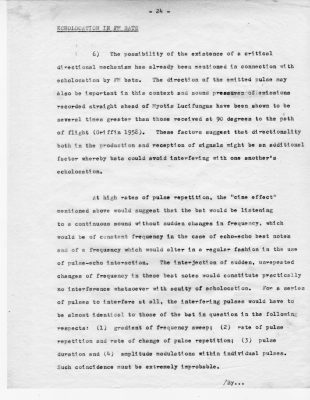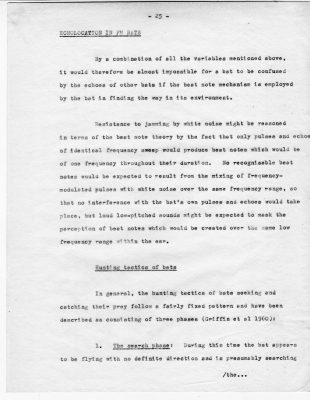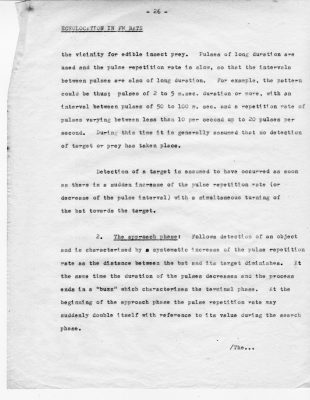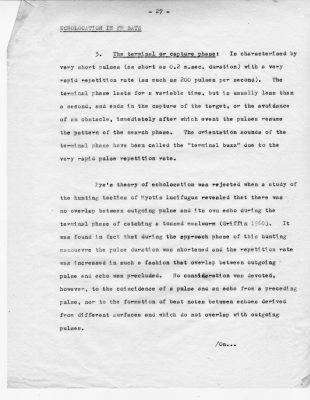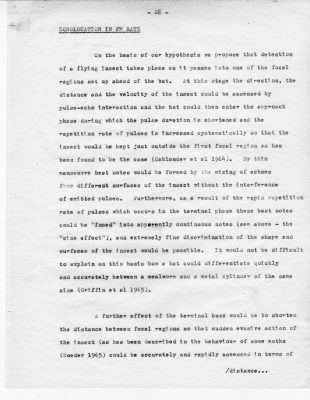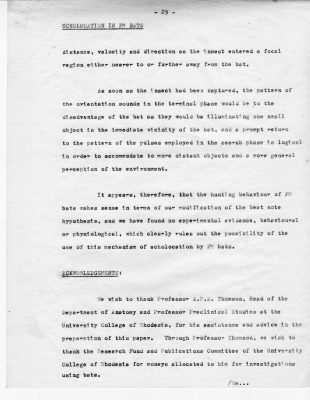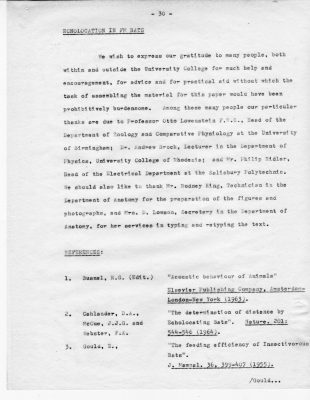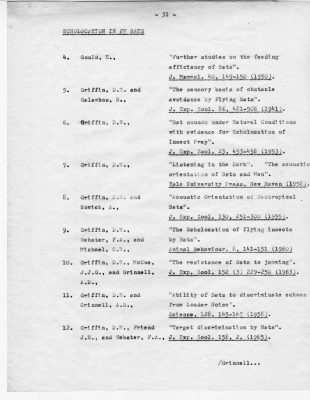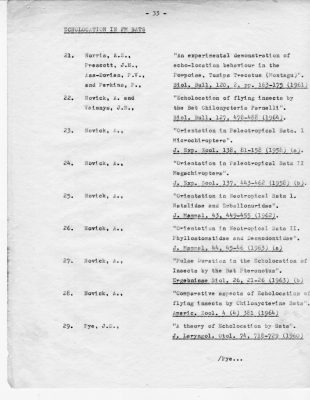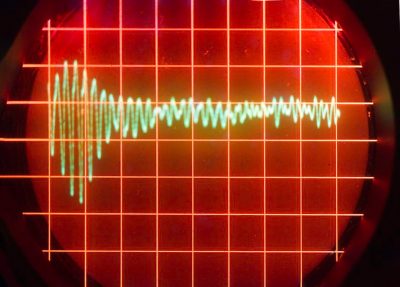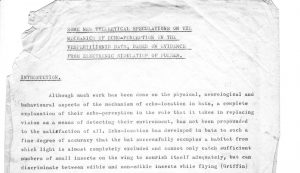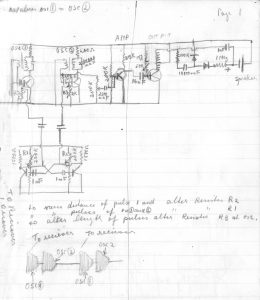Bats Echolocation Research – Blind Aid – Sonar Burglar Alarm (read more)
Following his return from the great Far East road trip in 1961 David Chudy decided to devote his full energy to electronic invention and scientific research. His decided to invent a new sonar blind aid device using new methods based on his ideas as to how bats ‘see’. He worked with St Dunstan’s in England which specialized in blindness. He then produced what may have been one of the earliest sonar burglar alarms and Phillips Eindhoven produced devices based on his patent for some years.
Meanwhile – unfinished business for David Chudy, on his early death from a massive heart attack was his and Dr. Strover’s jointly produced scientific paper on bat echolocation theory. Sample pages of a draft for that are included in the gallery below.
It was calendared to be published by Nature Magazine pending clarification of a few minor queried points. He told his wife Ellen that all had been resolved, on the eve of his sudden passing. It was to be written up the day after, and this never happened. He was 56 on July 27 1967. The task of collating the data after the fact was daunting, and in a spirit of generosity, compatible to his general attitudes to knowledge and human understanding, Ellen donated all his research documentation, to other leading international bat researchers.
It is hard to assess the worth of the dolphin speech hypothesis in retrospect. Many different forms of sonar for imaging have been envisaged, but seemingly very little of the research has been published. The military likely has a monopoly in the field, conceivably for undersea applications such as mapping enemy installations, or tracking submarines. Concepts, specifically relating to David Chudy’s ideas – about how dolphins themselves might see, think, or communicate about their environment – do not seem to have been explored (or discounted) in the near 60 years since his death.
